#balkan mountain range
Explore tagged Tumblr posts
Text

Perennial cornflower, mountain cornflower, or mountain bluet (lat. Centaurea montana).
A flower that came down to us from the mountain meadows of the Pyrenees, the Alps and the Balkans. Cornflower has a pleasant caramel smell, unobtrusive, but noticeable at close range. It is impossible to forget this fragrance, I understand why butterflies and bumblebees love it so much🦋🐝
Василек горный (лат. Centaurea montana). Цветок, сошедший к нам с горных лугов Пиренеев, Альп и Балкан. Василек имеет приятный карамельный запах, ненавязчивый, а ощутимый на близком расстоянии. Этот аромат невозможно забыть, понимаю, почему его так любят бабочки и шмели🦋🐝
#noseysilverfox#photography#flowers#botanic garden#blue flowers#plants#interesting#random facts#nature#plant photography#flora and fauna#bumblebee#beautiful village#village#blue aesthetic#botanical#photooftheday#fotografía original#original photography#photos on tumbler#васильки#фотоблог#деревня#сад#цветы#лето#шмели#фотография#фотографии на тумблере#интересные факты
107 notes
·
View notes
Text
Day 51 of posting cute creatures we found on our field trip:

Viviparous lizard (Zootoca vivipara) is the smallest European lizard. This is an adult female, they don’t get bigger than this. These lizards prefer to live in cold climate and on high mountains. They can be found in Scandinavia and Northern Europe, the Alps and all mountain ranges in Balkans. They adapted to cold climate and long winters by live bearing and being tiny.
This is the last creature we found! I hope you enjoyed this “series” and fun facts about all the animals we met.
21 notes
·
View notes
Text

Transcription
Tubbo
Fawn (goat hybrid)
15 years old
Fawns are a common hybrid type originating mostly from the Alps, Apennis, and Balkan mountain ranges. Fawns are considered medium sized hybrids, alongside humans, canids, and creerids, with an average height of five and a half feet tall and average weight of around 140 lbs.
The following are the standout traits of the fawn. Their cloven hooves and keratin tipped fingers, which help with climbing the often steep and rocky mountains of their original range. These hooves require more care than the paws or flat feet found in many other hybrids, especially with them not being worn down naturally due to modern sedentary lifestyles. Most of this care can be done at home, but professional farriers are also common in many urban centers. Their horns, which are not a sex related trait, as is often believed, but rather related various somatic genes which determine the size, number, and shapes of the horns. Polled fawns do exist, but are uncommon. Fawns, like true caprines (goats and sheep), also have a natural resistance to head injury when hit from the front, although this resistance lessens with age. Their GI tract. Fawns are pre gastric ruminants, giving a healthy fawn the ability to break down a much higher variation of foliage than many other hybrids. Unlike true caprines, fawns are not totally reliant on their rumens for proper digestion, and are therefore highly unlikely to run in to health issues such as acidosis, however it’s still recommended that fawns manage their rumen health appropriately by doing things such as taking appropriate prebiotics, eating fiber heavy diets, monitoring their microbiome, and avoiding microbe unfriendly foods and drinks, such as highly acidic foods and alcohol.
Tobias “Tubbo” Schlatt is a good example of a typical fawn. Standing at 4’11” he’s on the shorter side, but still well within 2 standard deviations from the mean height of a fawn his age. His horns are also growing in well, with nothing to note there. His hooves are slightly overgrown and beginning to turn in, either more diligent home care or more frequent trips to a professional ferrier are recommended. His rumen microbiome panel does show a lower pH level and lower biodiversity than would be ideal, prebiotics and probiotics have been recommended, along with a higher fiber diet. Overall Tubbo’s physical health is good.
Tubbo was diagnosed with dyslexia at the age of 7, but his reading level is on track for his age. Tubbo attends Mother Prime University Preparatory school and his grades are average. Overall his psychological health appears good, but due to the stressors at home (single parent household, deceased mother, blended family) a more in depth psychological evaluation is recommended.
transcription ends
still not a great artist, but after doing Ranboo I decided to do Tubbo from the godson too!
handwriting is in the image description again if you have a hard time reading it
17 notes
·
View notes
Text
Bearded Vulture - Gypaetus barbatus


The bearded vulture, also known as the lammergeier and ossifrage, is Europe’s rarest vulture. They once resided in all the mountain ranges of southern Europe from western Spain to the Balkans. Today, they can be found sparsely spread across those ranges, such as the Pyrenees, Sierra Nevada and Alpine mountain ranges. There are also small populations on the islands of Corsica and Crete. However, the population in western Europe is increasing.
A large bird of prey, the bearded vulture has a body length of up to 125 cm (49 inches) and a wingspan of up to 2.83 meters (approximately 9 feet). Females are typically slightly larger than males. When flying, this vulture is unmistakable from others due to its long, narrow wings and long, wedge-shaped tail. As a chick, these birds have dark brown feathers. However, as they mature, their head, neck, chest and most of their body become increasingly white. Their wings will remain dark brown-grey. Their creamy-coloured forehead contrasts against a black band across the eyes and lores and bristles under the chin, which form a beard that give the species its English name. You may notice that these birds often appear to be a rusty color rather than white. This is due to bathing extensively in bodies of water containing iron oxide which slowly stains their feathers.
Bearded vultures are scavengers and do not hunt live prey. Instead, they feed on the remains of dead animals. However, unlike many birds that feed on the meat, these vultures feed primarily on the bones of their food. In fact, bones make up nearly 90% of it’s diet. The bearded vulture can swallow whole or bite through brittle bones up to the size of a lamb's femur. If they are unable to swallow or bite through a bone, they will fly to great heights where they then drop the bones onto rocky surfaces to shatter them into eatable pieces. This is where the name ossifrage, or “bone breaker,” comes from.
All information is from Wikipedia and [here]. Images are from [here] and [here].
2 notes
·
View notes
Text
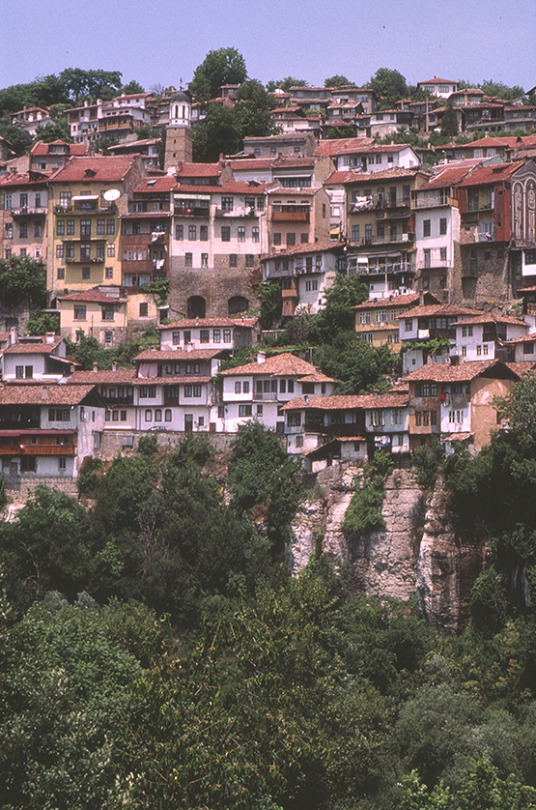
Stepped dwellings from across bend in the Yantra River
Veliko Tărnovo, Bulgaria
The deep chasm of the meandering Yantra River creates a dramatic site for this historic central Bulgarian city, strategically located on the north-south route through the Balkan Mountain range. The old core covers three hills around the river, and buildings cling to the steep slopes. Fortified capital of Bulgaria's medieval kingdom and of the Second Bulgarian Empire, also a key trading center, the city had diverse residents and retains numerous historic structures. Old houses mix with newer structures above the river chasm. (photo 2000)
46 notes
·
View notes
Text
What is Ukraine Anyways?
Ok so lets start, what is Ukraine? Ukraine is a nation in Eastern Europe, just south of Belarus, just East of Poland, just north of Romania and Moldova, and just West of Russia. I know what you're thinking “Belarus, what's that '' so ok, maybe US geography could use a bit of work. Before the war Ukraine had a population of 44 million people, and was either the largest or second largest nation in Europe depending on how you count Russia. And I think that is worth focusing on. Ukraine is massive, about the size of Texas, and yet it's forgotten because it's next to Russia, the largest nation in the world.
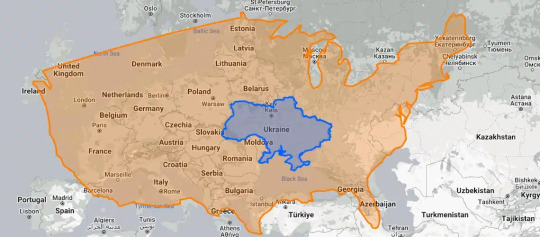
Ukraine is sometimes called “The Ukraine '' but that's controversial for reasons we will talk about later. So there are three main things that you need to know about Ukrainian history
First, Ukraine is famous for its fertile soil, the “Black Earth”, and is one of the major agricultural powers in the world, certainly it is the supreme agricultural powerhouse of Eastern Europe. This also makes it extremely valuable to other nations who might want to colonize it.
Second, Ukraine doesn’t have much in the way of Natural Borders. A Natural Border is a landscape feature which provides a convenient barrier between nations. A mountain range, a river, an ocean, or a desert are all good natural borders because it means that anybody who wants to invade you needs to really commit. While part of Ukraine is on the Black Sea and you have the Carpathian mountains in the west, the rest of it is…really not, it's mostly a mix of farmland and steppe.
Thirdly, this combination of fertile land and lack of natural defenses means that Ukraine has a long history of being invaded from almost every side, and one of the tricky legacies of this is figuring out where Ukraine stops and another country begins because The Commonwealth, Prussia, the Golden Hoard, Germany, Austria-Hungary, the Ottomans, and most infamously Russia have all had their shot at seizing Ukrainian territory. This is made worse because Ukraine is sort of in the middle of a bunch of other states, it connects between a bunch of territory. This is actually where the term “Ukraine” comes from, it means “borderland”
As a result of said fertility and constant invasion, Ukraine is an extremely ethnically diverse region, both in terms of Religion and Ethnicity. You have Ukranians, Russians, Tatars, Bulgarians, Jews, Hungarians, Romani and Pols living within the borders, with a lot of mixing between these groups.

So one final thing I want to talk about is Slavs, because I am going to be using that term a lot and it is good for non-Europeans to know what that means. Slavs is an ethnic/linguistic group that combines a wide variety of different ethnic groups, mostly linked through linguistic origin. A lot of ethno-nationalists will claim that there is some sort of magical bond all Slavs have towards each other by blood, but it’s mostly language connections, like how French and Italian are different languages but are clearly related. Slavic people’s include Czechs, Slavokians, Pols, Belarusians, Bulgarians, “Yugoslavians' ' (I am not going to get into the ethnic politics of the Balkans here, dear god no), Ukranians and ethnic Russians. Many slavic languages (but not all) use the Cyrillic script, which comes from the Byzantine Empire (We will come back to them later don’t worry), including both Ukrainian and Russian. What matters for us is that the Ukrainian and Russian languages are very closely related and are somewhat understandable to each other, there is even a dialect, Surzhyk, which mixes the two even further. A good comparison is like Spanish vs. Portuguese, different languages but very close. Why this matters is that many Russian nationalists claim that Ukranian isn’t actually a language, it's just a dialect of Russian. I’m not a linguist, but everything I’ve read indicates it is its own language, it has a few unique letters and UKraine has this weird case with words going on. The biggest evidence towards me though are Rusisans friends of mine who have told me that when they visit Ukraine they often have a very hard time understanding what is going on. Also worth noting, most Ukranians speak Russian, about a third of them speak Russian as their first language, mostly in the east. We will get on that later
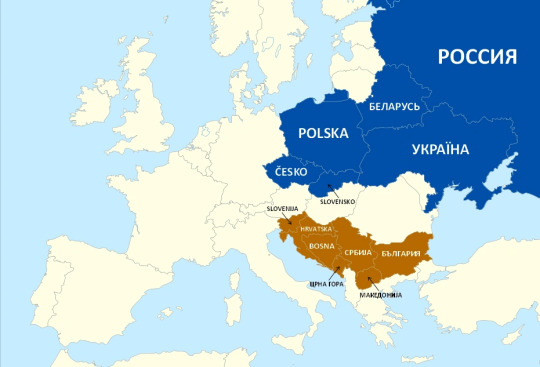
FInally, let's take a moment to talk about religion. Most Russians and Ukrainian are Orthodox Christians, aka “The Christianity people in the West forgets exists”. Short version is that before the Catholic Protestant Split in the 16th century, the previous sexy christian Split was in the 11th century between the Orthodox East and the Catholic West. Unlike the Reformation, this was less a doctrinal dispute and more of an organizational one, the Orthodox reject the Pope’s authority for the Byzantine Emperor, Catholics use latin as the liturgical language while the Orthodox used Greek, the Orthodox is a far more decentralized faith, they each have opposite signs of the cross, little things ike that. There have been…a lot of wars between these two groups and a lot of bad blood left over from said wars, such as the Fourth Crusade which sacked Constantinople or the Teutonic Knights (we will get to them more later.
Important for future events is the fate of the Byzantine Empire. Basically, when the Western Roman Empire Fell, the Eastern Empire continued on going until 1453, when it was finally destroyed by the Ottoman Empire. The Emperor was the head of the Orthodox church, so when the Empire fell, so too did the unity of the Orthodox church. Imagine if the Pope was killed, Rome was destroyed and no new pope was declared. So there isn’t one Orthodox CHurch, its several different Orthodox churches for each region.

#neglected historical fact#Ukraine#Russia#Orthidox Church#Borderlands#Natural Borders#russo ukrainian war#nationalism#“the Ukraine”#Campism#Tankies
4 notes
·
View notes
Note
11, 20 and 22 for the end of the year asks :)
11. Something you want to do again next year? Get back into martial arts and a healthy lifestyle 💪
20. What’s something you learned this year? That I don't have to rush too much. I hope I remember that lesson 😅 Also, some Swedish! That was unexpected but fun.
22. Favorite place you visited this year? I was lucky enough to visit a lot of places but my favourite, off the top of my head, was probably just around the Balkan mountain range in Bulgaria. If we're talking exclusively about foreign places, then it was Istanbul in Turkey.
3 notes
·
View notes
Text
The first day of school in Bulgaria began with cool temperatures ranging from 6 to 11 degrees Celsius in most areas, while in South-Eastern Bulgaria and along the Black Sea, temperatures are slightly higher, reaching up to 15-16 degrees. The cloud cover from the west is gradually breaking up, but the country remains under the influence of a cyclone bringing cool air and heavy rain to central and western Europe, according to forecaster Anastasia Stoicheva from NIMH.
Stoicheva explained that the cyclone, currently centered over the northwestern Balkans, is expected to move westward in the coming days. This powerful cyclone has already caused significant rainfall and damage in Central Europe. In Bulgaria, cooler mornings are anticipated throughout the week, with temperatures rising from Tuesday. Increased cloud cover and substantial precipitation are expected on Wednesday and Friday in various parts of the country, although mountainous and eastern regions may see less rainfall. Today, the highest likelihood of precipitation is in South-Eastern Bulgaria, while the rest of the country will experience cool weather with minimal precipitation.
The cyclone, named "Boris," has had a major impact on Central Europe, including the southern regions of Poland, and has caused significant rainfall in the Czech Republic and Slovakia. Over the next few days, heavy precipitation is forecasted for Italy and along the Adriatic coast of the Balkans. Austria is expected to experience substantial rainfall, with totals exceeding 50 liters per square meter in some areas, and snowfall in the Alps will contribute to significant snow cover. In the Czech Republic, Slovakia, Hungary, and the northwestern Balkans, precipitation levels are anticipated to range between 25 and 50 liters per square meter.
In Bulgaria, precipitation is likely around September 27-28. However, temperatures in the latter half of September are expected to rise, ranging between 20 and 25 degrees Celsius, and frosts are not anticipated during the next 10 days, despite ongoing precipitation in many areas, Stoicheva noted.
2 notes
·
View notes
Text

BASICS
FULL NAME: ILLIR VORPSI » MEANING: Ilir [Albanian; Freedom or free. A character from Albanian mythology. ]; Vorpsi [The Vorpsi surname is a native Albanian surname/tribe of Tirana. It originates from the words vorbull and vorb, meaning 'whirlpool' and referring to the families' occupation was pottery. Another theory is from Maja e Vorbatines, a mountain range in north Albania which they could be related too, but the occupational surname theory is more credible.]
Adding coz KARKANXHOLL I guess doesn't literally translates to 'werewolf" but... It sounded cool so, Illir and I was like, YEP. In Albanian Mythos, The ‘’Karkanxholl’' was that Culture’s ‘’Vampire’’ figure. However, unlike the ‘’traditional’’ Vampire Beings, The Karkanxholl was also part-Wolf. As such, They were often portrayed in A rt and Literature as being ‘’Humanoid’’ with the overall qualities of both ‘’Vampire’’ and ‘’Werewolf’’. The set-apart for The Being was that it was most shown as being ‘’Human’’, but wearing Chain Mail (a loose fitting Armor). Blood Drinkers, The Karkanxholl were most often Male in portrayal – and could be ‘’extinguished’’ like most traditional ‘’Vampires’’.
VERSE: Sanguine, The Night Shift
NICKNAME(S): Illy
AGE: 35-years old.
DATE OF BIRTH: 1989 April 8th, Sunday.
PLACE OF BIRTH: Tirana, Albania.
OCCUPATION: Businessman; heir to one of the oldest and successful pottery business in the Balkans and Europe. The business is expanding in some parts of Asia and Americas as well.
SPECIES: Werewolf.
POWERS: Possess the traits, attributes and/or abilities of, transform into, or be/is a werewolf. Healing, slow aging, super-strength.
WEAKNESSES: Paralytic venom, silver.
PERSONALITY
STRENGTHS: Courageous, Determined, Confident, Enthusiastic, Honest, Passionate.
WEAKNESSES: Impatient, Moody, Short-Tempered, Impulsive, Aggressive.
APPEARANCE
FACE CLAIM: Can Yaman.
HEIGHT: 6′2 ft. [188]
WEIGHT: 165 lbs. [75 kg.]
BUILD: Muscular.
GAIT: Relaxed.
HAIR COLOR: Brown.
EYE COLOR: Brown.
BIRTHMARK: TBA.
OVERVIEW: » SCARS: Plenty. A major one on his back which he got after a fight when he was a teenager. » TATTOOS: Yes. TBA.
BACKGROUND
HOMETOWN: Tirana, Albania.
RESIDENCES: Tirana, Albania; Istanbul, Turkey. He also has houses in Sanguine, Louisiana. New York, New York, and San Francisco in Cali. He also travels to Europe and has a flat in London.
NATIONALITY: Albanian.
ETHNICITY: //
FINANCIAL STATUS: Upper class. He's loaded, come love him.
EDUCATION LEVEL: Uni graduate.
DEGREES: In being a bad-ass alpha lycan king. I have no idea what I'm doing. He's got a business degree but I'm thinking he's into history stuff, too.
SPOKEN LANGUAGES: Illir is multilingual. He's very good with his tongue, WINK WINK. He's very well traveled since he was very little and lived in various countries. Aside from Albanian which is his mother-tongue, he speaks a couple of dialects. He's fluent in Turkish, Greek, Italian, and knows a lot of Arabic. He speaks English as well and some Spanish and French. He can understand Romanian but is very rusty.
RELATIONSHIPS
PARENTS: Elira Vorpsi [m.]; Agron Vorpsi [f., deceased]
SIBLINGS: Half-brother, Hunter Krasniqi. [ The name "Krasniqi" is of Albanian linguistic origin. The exact historical origin and meaning of the surname "Krasniqi" can vary, but it's believed to be related to the Albanian word "kërsenik" or "kërseniku," which means "blackbird" or "thrush."]
CHILDREN: None.
PETS: A stray pitbull, Acimah.
SIGNIFICANT RELATIONSHIPS: » Illir is to marry a mate but he has not found them.
FAMILY HISTORY: Illir is the eldest son and heir to the throne of a powerful lycan tribe in Albania. When Alpha Agron died, Illir who was in his early 20's took over.
Agron was not the best father and was known the bed a lot of women. It was said that Agron had many offspring but only Illir was the legitimate child and heir to the throne and family richest.
Illir is very much different from his father who he criticized a lot while he was living. Illir tried his best to support many known siblings of him by connecting with them and giving them jobs, etc. There is one particular younger sibling, Hunter, that he is in search for was born to a human mother who was part of their community.
Illir knew Hunter's mother and was fond of her when he was growing up. When she got pregnant by Illir's father, she was kicked out of the community.
Illir travels a lot for work and uses this opportunity to look for his younger brother whom he heard is struggling.
ROMANTIC HISTORY: Many hook-ups. Man whore.
PLATONIC RELATIONSHIPS: Marcel the witch/brewer. He's addicted to Marcel's brew and often spends time at Serafine's when he's in Sanguine. Jesus doesn't like it.
THOUGHTS ON LOVE: “It'll happen when the time is right.”
HEALTH
PHOBIA(S): None.
HANDICAP(S): None.
MENTAL DISEASE(S): None.
PHYSICAL DISEASE(S): None.
PREDISPOSITION(S): None.
8 notes
·
View notes
Text
Sofia: The Hidden Gem of the Balkans
Located in the heart of the Balkans and having hosted numerous civilizations throughout history, Sofia, the capital of Bulgaria, is a true paradise for travelers with its rich cultural heritage, historical landmarks, and breathtaking views. Here are some of the must-visit places in Sofia:
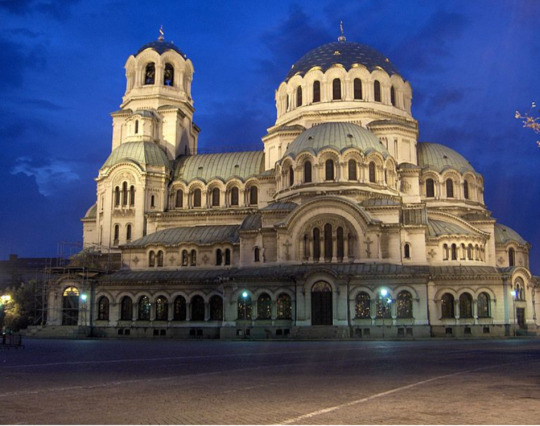
1. Alexander Nevsky Cathedral: One of the symbols of the city, this magnificent cathedral was designed by Russian architect Alexander Pomerantsev in the 19th century. Built in honor of Tsar Alexander Nevsky, a Bulgarian national hero, the cathedral enchants visitors with its architectural elegance and mosaic interior.


Icon of St. Eudokia
2. Boyana Church: Located just outside Sofia in the village of Boyana, these churches are included in the UNESCO World Heritage List for their frescoes dating back to the 10th and 13th centuries. With its historical and artistic significance, it's a fascinating destination to explore.
------------------------------------------------------------------------------
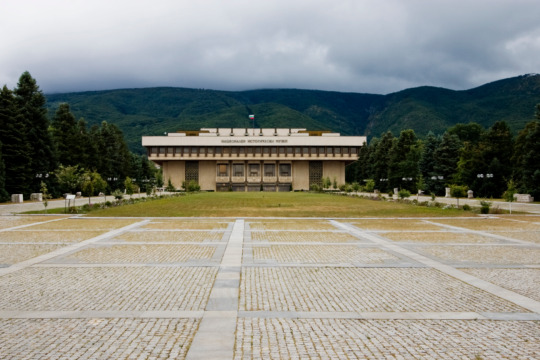
3. National Museum of History: Ideal for those who want to delve into Bulgaria's rich history in detail. The museum houses a wide range of historical collections spanning from ancient times to the Middle Ages, from the Ottoman period to the Bulgarian National Revival.
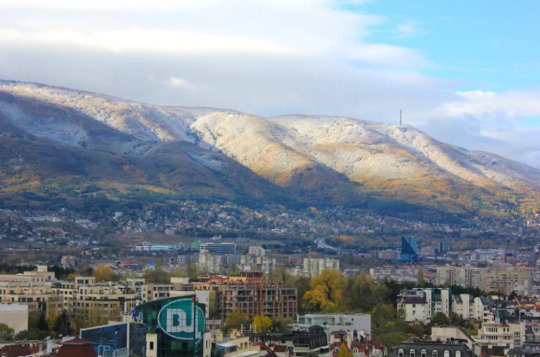
4. Vitosha Mountain: Vitosha Mountain, located near Sofia, is a wonderful escape for nature lovers. Throughout the year, it offers outdoor activities such as trekking, mountain biking, and skiing. The villages at the foot of the mountain are also interesting stops for travelers.
5. Roman Thermae: The ruins of the Roman Baths in the center of Sofia are an important relic from the ancient Roman period. Visitors can see the remains of ancient thermal baths and learn about life during the Roman era.
------------------------------------------------------------------------------
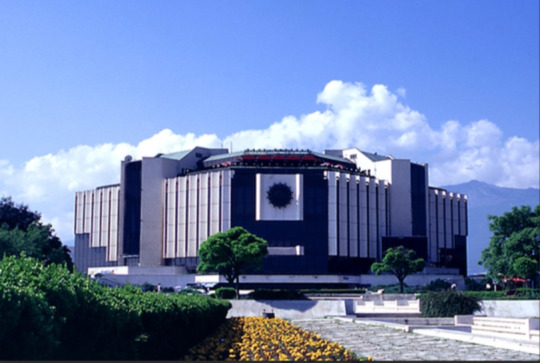
6. National Palace of Culture (NDK): The largest conference and exhibition center in Bulgaria, NDK stands out with its modern architecture and events. It is a popular venue for concerts, exhibitions, festivals, and other cultural events.
Sofia is a city filled with historical and cultural riches. The places listed above will help you explore the city's rich heritage during your visit.
2 notes
·
View notes
Note
Byzantine empire/caucasus anon here: I actually meant the time when Rome fell, not when the Turks took Constantinople. Like why didn't the Byzantines expand past the gates of Alexander (the Caucasus mountain range)
Ah, sorry, I thought you meant the "western part of the Byzantine Empire" and I was wondering if you meant the Norman invasions into the Balkans or the collapse. My mistake.
It was too difficult to conquer, the Derbend and Dorial passes were too easy to defend asymmetrically, and there were more financially lucrative territories in other directions.
Thanks for the question, Anon.
SomethingLikeALawyer, Hand of the King
13 notes
·
View notes
Note
wait so... IS slovenia a balkan country? I can't seem to find a clear answer, but technically, the Balkan mountain range doesn't reach into Slovenia, right? I know there's a lot of connection as ex-yugoslavian countries and that though? sorry, lining up history + geography + politics is just Not my field of expertise, I read one thing and forget it and then I can't form connections
i can’t be 100% sure myself but from all the geography i know and from what i’ve read over the years, Slovenia is a balkan country in the same sense as Greece and Turkey are
part of Slovenia is located in the Balkan Peninsula (same happens with parts of Greece and Turkey) so in that sense it can be considered as a balkan country. now culture wise, i obviously can’t know per se, and it’s been like a decade since i’ve been to Slovenia myself and came in touch with the culture there, but there are similarities with that of other balkan countries. now idk how to word this correctly so it doesn’t come out the wrong way, but Slovenia feels like it’s a more Central Europeanised country since it’s neighbouring with Italy and Austria, with which they probably share culture elements too
2 notes
·
View notes
Text
Are you really expecting him to walk through the Balkans and the Rila-Rhodope Massif?
He sailed the Aegean (a trade super highway) because he would otherwise be climbing a series of mountain ranges in Thrace of all places and I'm not even going to start on that part of the world in the damn late Bronze Age.
Was curious how far Ithaca was from troy today while listening to epic the musical and rereading the illiad and I found this map

I think odysseus would have been better just to walk😭
60K notes
·
View notes
Text
Title: Exploring Montenegro’s National Parks: A Guide to Nature’s Best in the Balkans:
Montenegro, a small yet captivating country nestled in Southeastern Europe, is a paradise for nature lovers. With its majestic mountains, lush forests, pristine lakes, and rich biodiversity, Montenegro is home to some of the most beautiful national parks in the region. The country’s diverse landscapes make it a haven for outdoor enthusiasts, from hiking and wildlife watching to photography and simply soaking in the natural beauty. In this article, we’ll explore the best national parks in Montenegro and why they should be on your travel list.

Why Visit Montenegro’s National Parks?
Montenegro’s national parks offer a variety of ecosystems that are teeming with life, making them perfect for eco-tourism and nature exploration. The parks are well-preserved and have been designated to protect Montenegro's rich natural heritage. They are also important for biodiversity conservation, providing safe havens for many endemic species of plants and animals.
Whether you're an adventurer seeking rugged terrain or someone who prefers peaceful walks through forests and by lakes, the national parks of Montenegro offer something for everyone.
1. Durmitor National Park:
Durmitor National Park is arguably the most famous of Montenegro’s national parks and is a UNESCO World Heritage Site. Known for its dramatic mountainous landscape, it is home to rugged peaks, deep valleys, and over 50 glacial lakes, including the stunning Black Lake (Crno Jezero). This park is a mecca for outdoor activities like hiking, climbing, and skiing in the winter months.
One of Durmitor's most unique features is Tara Canyon, Europe’s deepest canyon, which offers breathtaking views and thrilling white-water rafting opportunities. The park is also a sanctuary for a variety of wildlife, including brown bears, wolves, and rare bird species. If you’re an avid nature lover, Durmitor offers a true wilderness experience.
2. Biogradska Gora National Park:
Biogradska Gora is one of the last remaining primeval forests in Europe and is a must-visit for anyone interested in ancient, untouched nature. Located in the central part of Montenegro, this national park is home to dense forests, crystal-clear lakes, and a range of wildlife including deer, wild boar, and various bird species.
The centerpiece of Biogradska Gora is Biograd Lake, surrounded by towering trees and stunning mountain views. There are numerous trails for hiking, with varying levels of difficulty, making it an ideal destination for both casual walkers and serious trekkers. The park is also known for its tranquility, making it the perfect place to escape and unwind in nature.
3. Lovćen National Park:
Lovćen National Park is located in the southwestern part of Montenegro and is famous for its picturesque landscapes and historical significance. The park is home to Mount Lovćen, which is a symbol of Montenegro's national identity, as it houses the mausoleum of the country’s most revered historical figure, Petar II Petrović-Njegoš.
In addition to its historical importance, Lovćen offers a wealth of natural beauty. The park features dense forests, meadows, and stunning viewpoints overlooking the Bay of Kotor and the Adriatic coast. It’s a great place for hiking, cycling, and enjoying panoramic views of Montenegro’s diverse landscapes.
4. Skadar Lake National Park:
Skadar Lake National Park is the largest freshwater lake in the Balkans and is shared by Montenegro and Albania. This park is a haven for birdwatchers, as it hosts over 270 species of birds, including rare species like the Dalmatian pelican. The lake’s tranquil waters are perfect for boat trips, and the surrounding wetlands are rich in plant and animal life.
In addition to birdwatching, visitors can enjoy hiking, cycling, and even swimming in the warm waters of the lake. The park is also home to several charming villages, where visitors can explore traditional Montenegrin culture and cuisine.
5. Prokletije National Park:
Prokletije National Park, located in the northeastern corner of Montenegro, is less well-known but equally stunning. Known as the “Accursed Mountains,” this park features jagged peaks, alpine meadows, and deep river valleys. Prokletije is a paradise for experienced hikers and mountaineers, with challenging trails and remote landscapes.
The park is rich in biodiversity, and its rugged terrain provides a habitat for species such as brown bears, wolves, and lynx. Prokletije is a place for those who seek adventure and wish to explore Montenegro’s wilder, less-traveled corners.
Conclusion
Montenegro’s national parks are a treasure trove of natural beauty and offer endless opportunities for outdoor exploration. From the rugged peaks of Durmitor to the serene lakes of Biogradska Gora, each park provides a unique experience that will leave you in awe of the country’s diverse landscapes. Whether you’re an adrenaline junkie or someone looking to relax in nature, the national parks of Montenegro are sure to provide an unforgettable experience.
1 note
·
View note
Text
Balkan Mountains
Photo: Central Balkan National Park in Bulgaria by trabantos Nestled in the heart of southeastern Europe, the Balkan Mountains stand as a testament to nature’s grandeur and historical significance. This majestic mountain range, often overlooked by mainstream tourism, offers a wealth of experiences for those willing to explore its rugged terrain and rich cultural tapestry. Stretching across…
0 notes
Text

Angelova kăšta, view from street
Koprivštica, Bulgaria
Koprivštica is a small town to the east of Sofia founded during the feudal period (early Ottoman control) high in the Sredna Gora mountains which are part of the Balkan range. The town has examples of the early national revival and late revival traditional architecture. The town, on the Topolnica River, has been designated a museum and a significant number of dwellings have been restored. The Angelova kăšta is an example of the early dwelling type. The ground level contained a shop to the street and the upper level provided living and family work space. (photo 2000)
24 notes
·
View notes